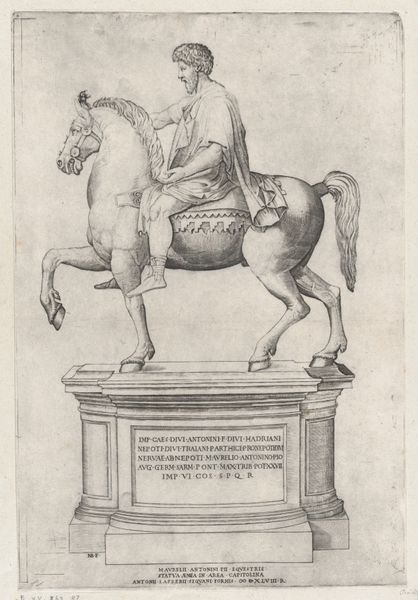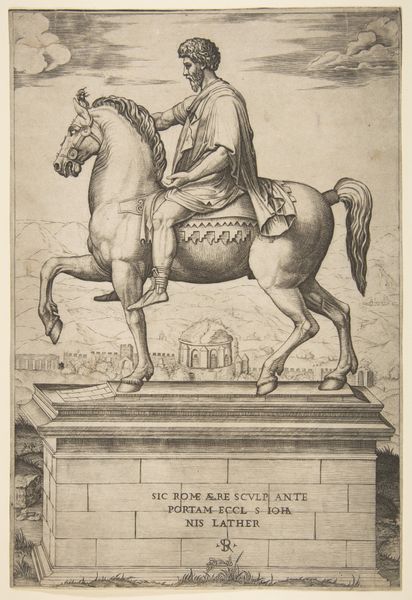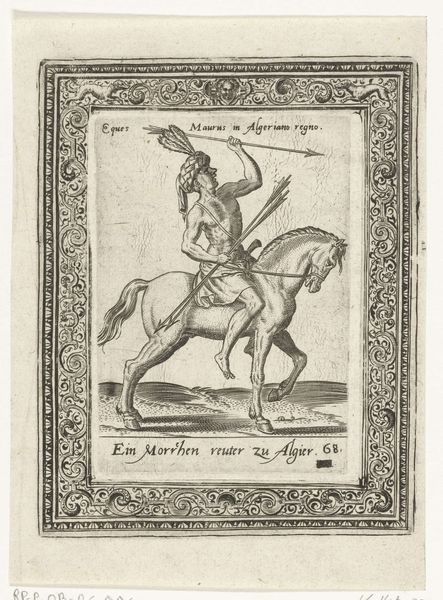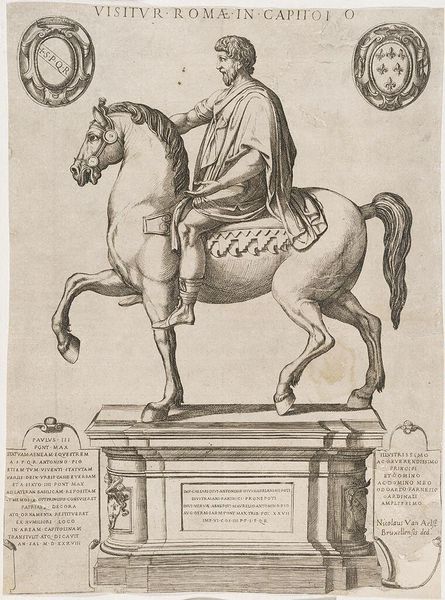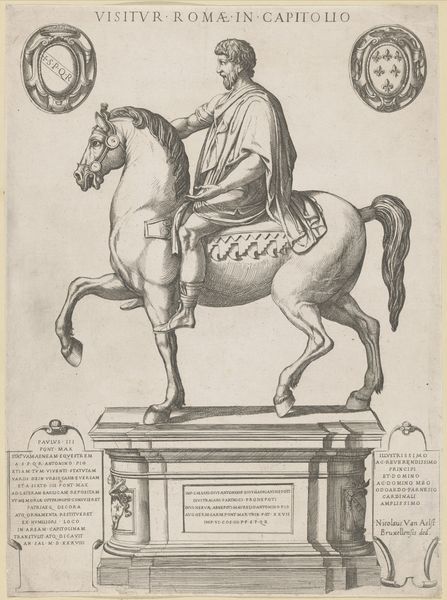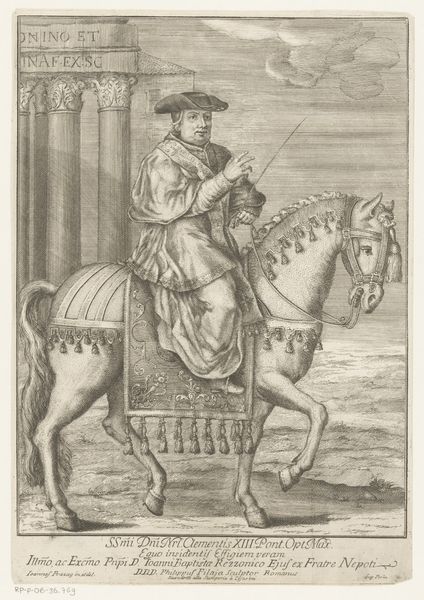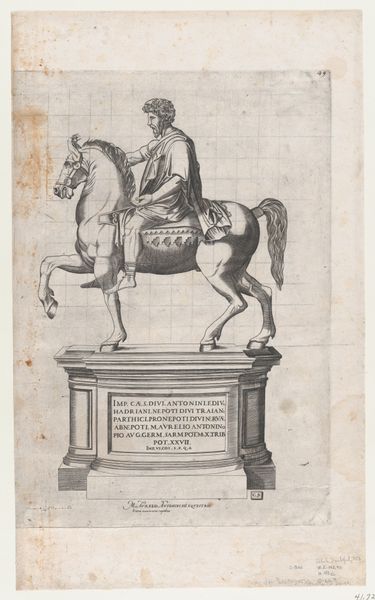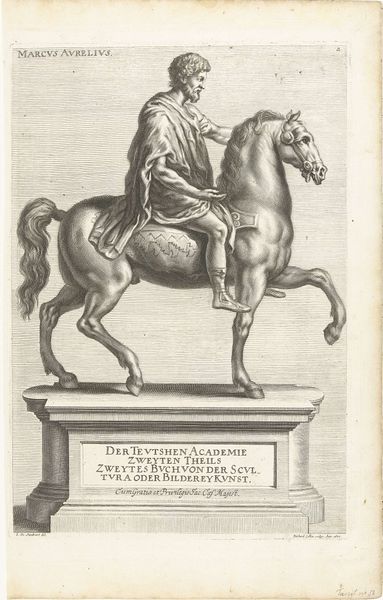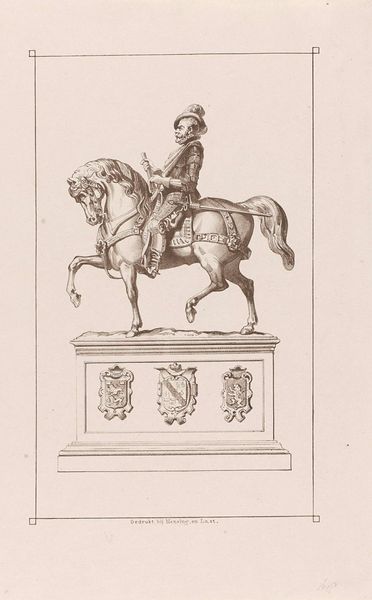
drawing, carving, print, metal, engraving
#
portrait
#
drawing
#
carving
# print
#
metal
#
old engraving style
#
figuration
#
form
#
11_renaissance
#
romanesque
#
line
#
history-painting
#
engraving
Dimensions: height 179 mm, width 131 mm
Copyright: Rijks Museum: Open Domain
Editor: Here we have Antonio Tempesta’s "Equestrian Statue of Emperor Constantine the Great," made sometime between 1565 and 1630. It's an engraving. What strikes me is its graphic simplicity. It’s just lines, but it gives the figure a lot of presence. How would you interpret the power dynamics displayed in this image? Curator: Well, first, remember engravings like this served a public function. They were relatively affordable and reproducible. Consider the statue itself. Equestrian statues throughout history were symbols of power and authority, weren’t they? But Constantine, importantly, adopted Christianity as the Roman Empire’s state religion. Note how he holds a cross aloft. This wasn’t just about temporal power; it was about divine right. Editor: So it's portraying political authority intertwined with religious legitimacy? Curator: Precisely! The print allows Tempesta to circulate this idea. Now, the statue itself—did it really exist as shown here? Likely not, in this exact form. But by depicting it, the artist, and, perhaps more importantly, whoever commissioned this print, were participating in the *creation* of history and an ideology linking religious authority and political leadership. Look at the inscription – do you recognize anything? Editor: Yes, the "SPQR"—"Senatus Populusque Romanus"—the Senate and People of Rome. So it ties Constantine back to classical authority? Curator: Absolutely. It’s a deliberate attempt to construct a narrative—Constantine as a continuation, yet a transformation, of Roman power, sanctioned by both earthly and divine authority. Editor: I hadn't thought about how prints could be tools for constructing historical narratives. Curator: They absolutely were, shaping public perception and solidifying specific versions of the past. Remember to consider the context and the intended audience for this image. Editor: Right, it's a lesson that the image itself has a history, a social life. Thank you.
Comments
No comments
Be the first to comment and join the conversation on the ultimate creative platform.
